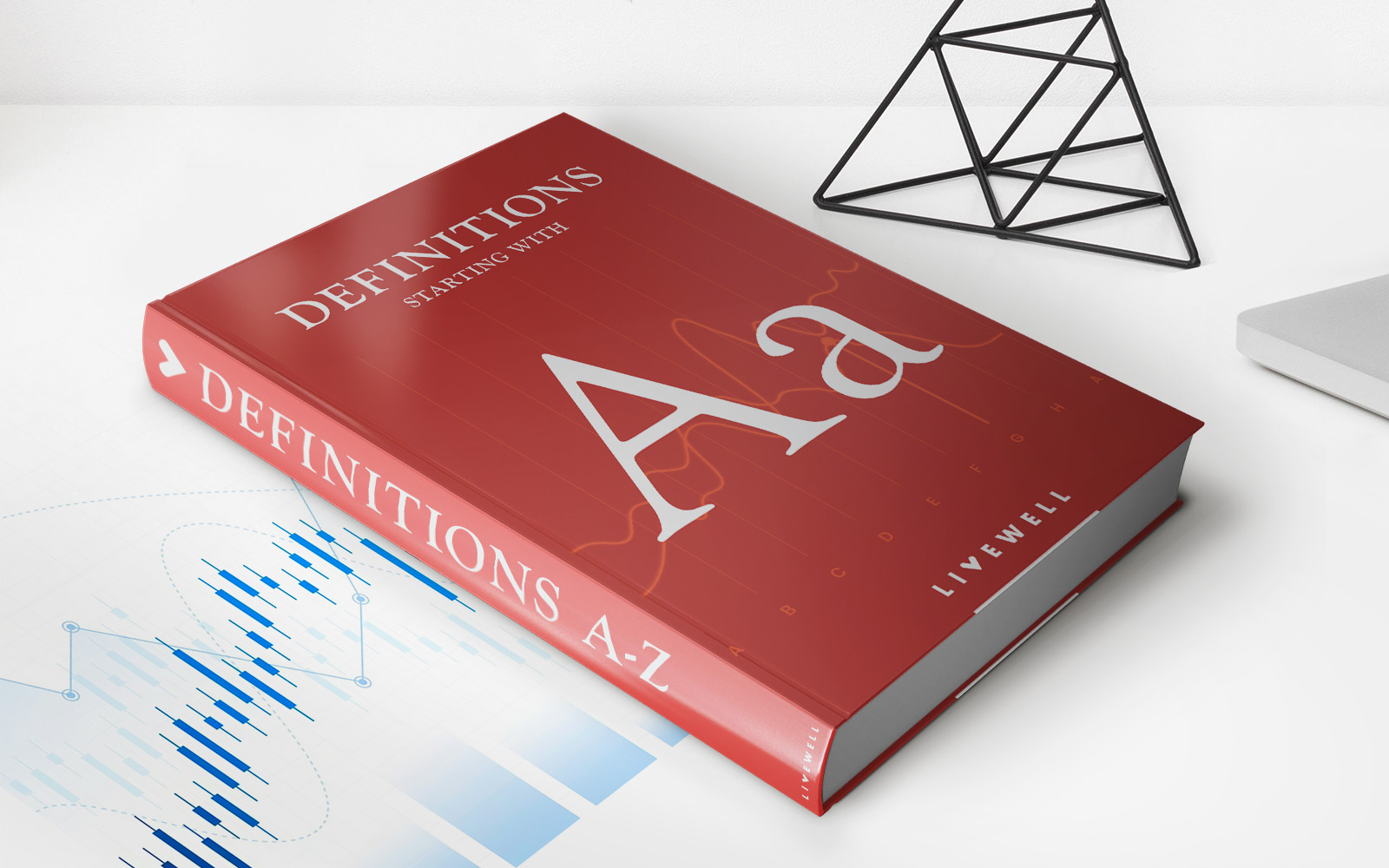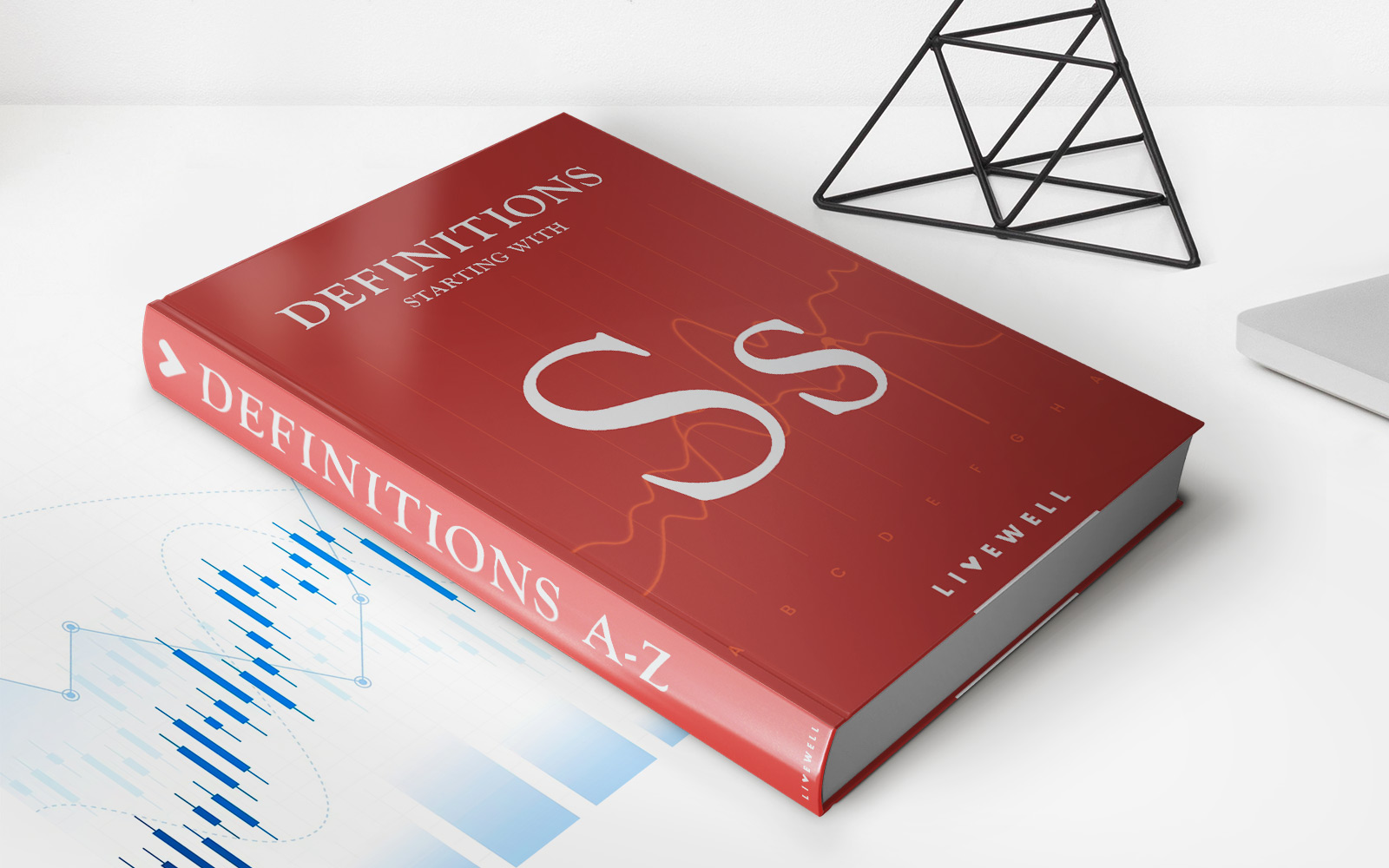Home>Finance>How Do I Know If My Student Loan Is Private Or Federal


Finance
How Do I Know If My Student Loan Is Private Or Federal
Published: October 22, 2023
Find out if your student loan is private or federal and gain a better understanding of your finances. Take control of your student loan repayment!
(Many of the links in this article redirect to a specific reviewed product. Your purchase of these products through affiliate links helps to generate commission for LiveWell, at no extra cost. Learn more)
Table of Contents
- Introduction
- Overview of Federal and Private Student Loans
- Federal Student Loans
- Types of Federal Student Loans
- How to Determine if Your Student Loan is Federal
- Benefits and Features of Federal Student Loans
- Private Student Loans
- How to Determine if Your Student Loan is Private
- Differences Between Federal and Private Student Loans
- Repayment Options for Federal Student Loans
- Repayment Options for Private Student Loans
- Conclusion
Introduction
When it comes to funding your education, student loans are often a necessary component. However, not all student loans are created equal. There are two main types of student loans: federal and private. Understanding the differences between these two types is crucial to managing your finances and planning for repayment.
Federal student loans are loans provided by the U.S. Department of Education, while private student loans are offered by banks, credit unions, and other financial institutions. Each type of loan comes with its own set of terms, interest rates, and repayment options.
Knowing whether your student loan is federal or private is essential because it affects your eligibility for certain repayment programs, interest rates, and loan forgiveness options. In this article, we will dive into the details of federal and private student loans and discuss how to determine which type you have.
Whether you’re a current student or an individual already in repayment, understanding the nature of your student loan will empower you to make informed decisions about your financial future. So, let’s explore the world of student loans and unravel the mysteries of determining whether your loan is federal or private.
Overview of Federal and Private Student Loans
Before we delve into the specifics of identifying federal and private student loans, let’s first understand the fundamental differences between these two types.
Federal student loans are issued by the U.S. Department of Education and are backed by the federal government. These loans are designed to assist students and their families in financing education expenses. Federal student loans generally have lower interest rates and more flexible repayment options compared to private loans. They also offer borrower protections such as deferment, forbearance, and loan forgiveness programs.
On the other hand, private student loans are provided by banks, credit unions, or other financial institutions. These loans are not guaranteed or subsidized by the government. Private student loans typically have variable interest rates and may require a co-signer, especially for borrowers with limited credit history. Private loans also have fewer borrower protections and repayment options compared to their federal counterparts.
It’s important to note that federal student loans should always be considered first before turning to private loans. This is because federal loans often offer more favorable terms, protections, and benefits for borrowers.
Now that we have a clear overview of federal and private student loans, let’s dive into the specifics of determining which type of loan you have.
Federal Student Loans
Federal student loans are loans provided by the U.S. Department of Education to help students and their families finance their education. These loans are backed by the federal government and offer a range of benefits and repayment options.
One of the key advantages of federal student loans is that they often have lower fixed interest rates compared to private loans. This can result in significant savings over the life of the loan. Additionally, federal student loans provide access to various repayment plans, including income-driven repayment options, which can make monthly payments more manageable based on your income and family size.
Furthermore, federal student loans offer borrower protections such as deferment and forbearance options. Deferment allows borrowers to temporarily postpone their loan payments, typically if they return to school, experience economic hardship, or serve in the military. Forbearance, on the other hand, allows borrowers to temporarily reduce or pause their loan payments due to financial challenges.
Another significant benefit of federal student loans is the potential eligibility for loan forgiveness programs. These programs, such as Public Service Loan Forgiveness (PSLF) and Teacher Loan Forgiveness, can help borrowers have a portion or all of their remaining loan balance forgiven after meeting certain requirements.
To access federal student loans, you must complete the Free Application for Federal Student Aid (FAFSA), which is used to determine your eligibility for federal financial aid programs, including grants, work-study, and loans. By completing the FAFSA, you will receive a financial aid package that may include federal student loans.
Now that we understand the basics of federal student loans, let’s explore how you can determine if your student loan is federal or private.
Types of Federal Student Loans
There are several types of federal student loans available to students and their families. Each loan type varies in terms of eligibility requirements, interest rates, and borrowing limits. Let’s take a closer look at the main types of federal student loans:
- Direct Subsidized Loans: These loans are available to undergraduate students with demonstrated financial need. The interest on subsidized loans is paid by the government while the borrower is enrolled in school at least half-time, during the grace period, and during deferment periods.
- Direct Unsubsidized Loans: Unlike subsidized loans, unsubsidized loans are available to both undergraduate and graduate students. They are not based on financial need, and the borrower is responsible for paying the interest throughout the life of the loan.
- Direct PLUS Loans: Direct PLUS Loans are available to graduate or professional students as well as parents of dependent undergraduate students. These loans require a credit check and offer higher borrowing limits to cover educational expenses not met by other financial aid.
- Direct Consolidation Loans: Consolidation loans allow borrowers to combine multiple federal student loans into a single loan with a fixed interest rate, resulting in a simplified repayment process.
It’s important to note that the interest rates, borrowing limits, and repayment terms for these federal student loans may vary each year. Therefore, it’s vital to stay updated with the latest information on available federal loan programs.
Understanding the types of federal student loans can help you determine which loan you have or are eligible for. The loan servicer, the entity responsible for collecting payments and managing the loan, will provide you with information about the specific type of federal student loans you hold.
Now that we’ve explored the types of federal student loans, let’s move on to the next section to learn how to determine whether your student loan is federal or private.
How to Determine if Your Student Loan is Federal
If you’re unsure whether your student loan is federal or private, there are several steps you can take to determine its type:
- Review your loan documentation: Start by reviewing the paperwork you received when you took out your student loan. This includes the promissory note and any loan correspondence. Look for any mention of “Department of Education” or “federal loan” to indicate that your loan is federal.
- Check the National Student Loan Data System (NSLDS): The NSLDS is a database maintained by the U.S. Department of Education that provides information about your federal student loans. Visit the NSLDS website and log in with your FSA ID to view a summary of your federal loan history.
- Contact your loan servicer: The loan servicer is the entity that manages your student loan on behalf of the Department of Education. If you’re unsure about your loan type, reach out to your loan servicer for clarification. They can provide you with information about the specific type of federal loan you have, such as Direct Subsidized or Unsubsidized Loans.
- Explore the repayment options available to you: Federal student loans offer a variety of repayment plans and forgiveness programs. Review the options available to you and see if your loan is eligible for any federal repayment benefits.
Remember, it’s essential to determine whether your loan is federal or private because it impacts your eligibility for certain repayment programs, forgiveness options, and borrower protections. Federal student loans generally offer more favorable terms and flexible repayment options, so it’s beneficial to maximize your utilization of federal loan programs before considering private student loans.
If you’ve determined that your loan is private, don’t worry. Private student loans have their own set of terms and repayment options. We’ll explore the details of private student loans in the next section.
Benefits and Features of Federal Student Loans
Federal student loans offer a range of benefits and features that make them a favorable choice for financing education. Here are some of the key advantages of federal student loans:
- Lower Interest Rates: Federal student loans generally have lower fixed interest rates compared to private loans. This can save you money over the life of the loan and make your repayments more affordable.
- Flexible Repayment Options: Federal student loans offer a variety of repayment plans to fit your financial situation. Income-driven repayment plans, for example, adjust your monthly payments based on your income and family size, making them more manageable during times of financial hardship.
- Deferment and Forbearance Options: If you encounter financial difficulties, federal student loans provide deferment and forbearance options, allowing you to temporarily pause or reduce your loan payments. This can provide you with the necessary flexibility and breathing room during challenging times.
- Loan Forgiveness Programs: Federal student loans offer various loan forgiveness programs, depending on your career choice and repayment history. The most well-known program is Public Service Loan Forgiveness (PSLF), which forgives the remaining loan balance after 120 qualifying monthly payments while working full-time for a qualifying employer, such as a nonprofit organization or government agency.
- Flexible Repayment Terms: Federal student loans often have longer repayment terms, providing you with a more manageable monthly payment amount. This can be particularly beneficial if you plan to pursue a lower-paying career or if you prefer a longer-term repayment strategy.
- No Credit Check (for most federal loans): Except for PLUS loans, federal student loans do not require a credit check. This opens up opportunities for students with limited credit history to access education financing.
- Borrower Protections: Federal student loans come with certain borrower protections, such as the ability to discharge loans in cases of total and permanent disability, death, or bankruptcy. These protections provide added security and peace of mind.
It’s important to note that the specific benefits and features may vary depending on the type of federal student loan you have. However, overall, federal student loans offer more flexibility, protections, and favorable terms compared to private loans.
Understanding the benefits and features of federal student loans can empower you to make informed decisions about your education financing. However, it’s also important to be aware of private student loans and their differences, which we will explore in the next section.
Private Student Loans
When federal student loans don’t fully cover your educational expenses, private student loans can be an option to bridge the gap. Private student loans are offered by banks, credit unions, and other financial institutions to help students and their families finance their education.
Compared to federal student loans, private student loans have a few key differences:
- Interest Rates: Private student loans often have higher interest rates than federal loans. The interest rates can be fixed or variable, depending on the terms of the loan and the borrower’s creditworthiness.
- Repayment Options: Private student loans generally have fewer repayment options compared to federal loans. While some lenders offer flexible repayment terms, such as graduated or extended repayment plans, the options are not as diverse as those available for federal loans.
- Credit Check and Co-signer: Private student loans typically require a credit check, and lenders often require a co-signer, especially for borrowers with limited credit history or income. Having a co-signer may improve your chances of getting approved and can lead to better interest rates.
- Borrower Protections: Unlike federal student loans, private loans may not offer the same borrower protections, such as deferment or forgiveness programs. However, some lenders may provide limited hardship options or forbearance in case of financial difficulties.
- Borrowing Limits: Private student loans may have higher borrowing limits compared to federal loans, allowing you to potentially borrow more to cover your education expenses. However, it’s important to consider the long-term implications of taking on significant debt.
- Interest Subsidization: Private student loans do not typically offer interest subsidies. This means that interest usually accrues on the loan from the time the funds are disbursed, leading to a higher total cost of borrowing compared to subsidized federal loans.
Private student loans can be a viable option for students who have exhausted their federal loan options or need additional funds. However, it’s crucial to carefully evaluate the terms, interest rates, and repayment options offered by various private loan lenders before making a decision.
It’s recommended to exhaust all federal student loan possibilities before considering private loans due to the additional benefits, protections, and flexibility offered by federal loan programs.
Now that we’ve discussed the differences between federal and private student loans, let’s move on to explore the various repayment options available for federal student loans.
How to Determine if Your Student Loan is Private
If you’re unsure whether your student loan is federal or private, there are several steps you can take to determine its type:
- Review your loan documentation: Start by reviewing the paperwork you received when you took out your student loan. Look for any indications of private loan providers or financial institutions. Private student loans are typically offered by banks, credit unions, or other private lenders.
- Check your credit report: Obtain a copy of your credit report and review the student loan accounts listed. Private student loans will often appear as accounts held by private lenders, whereas federal student loans will be associated with the U.S. Department of Education.
- Contact your loan servicer: If you’re still uncertain about the type of loan you have, reach out to your loan servicer. They will be able to provide information about your loan, including whether it is federal or private. The loan servicer is the entity responsible for managing your loan on behalf of the lender.
- Explore the repayment options and terms: Private student loans typically have different repayment options and terms compared to federal loans. Review the terms of your loan agreement and see if it aligns with the characteristics of private student loans, such as higher interest rates, credit checks, or the absence of federal repayment programs.
By following these steps, you can gain clarity on whether your student loan is federal or private. It’s important to distinguish between the two because it determines the available repayment options, interest rates, and borrower protections.
If you find that your loan is indeed a private student loan, it’s essential to familiarize yourself with the specific terms and conditions of the loan. Private loans may have different repayment options, interest rates, and eligibility criteria for forgiveness or deferment compared to federal loans.
Now that we’ve discussed how to determine the type of student loan you have let’s explore the differences between federal and private student loans in more detail.
Differences Between Federal and Private Student Loans
Understanding the key differences between federal and private student loans is essential for making informed decisions about your education financing. Here are some of the main distinctions:
- Source of Loan: Federal student loans are issued by the U.S. Department of Education, while private student loans are provided by banks, credit unions, or other financial institutions.
- Interest Rates: Federal student loans generally have lower fixed interest rates compared to private loans. Private student loan interest rates can vary and may be fixed or variable, depending on the lender and borrower’s creditworthiness.
- Repayment Options: Federal student loans offer a wide range of flexible repayment options, including income-driven plans and deferment or forbearance options. Private student loans have fewer repayment options and may require immediate repayment while you are still in school.
- Borrower Protections: Federal student loans offer various borrower protections, such as deferment, forbearance, and loan forgiveness programs. Private student loans typically have fewer borrower protections and may not offer the same level of flexibility in times of financial hardship.
- Eligibility: Federal student loans do not require a credit check (except for PLUS loans). Private student loans often require a credit check, and the approval and interest rates are based on the borrower’s creditworthiness. In some cases, a co-signer may be necessary to qualify for a private loan.
- Loan Forgiveness: Federal student loans may be eligible for loan forgiveness programs, such as Public Service Loan Forgiveness (PSLF), for qualifying borrowers who work in specific fields. Private student loans generally do not offer loan forgiveness or discharge programs.
- Borrowing Limits: Federal student loans have annual and aggregate borrowing limits, considering factors such as dependency status, year in school, and cost of attendance. Private student loans may have higher borrowing limits, allowing you to potentially borrow more to cover educational expenses.
- Co-signer Requirements: Federal student loans do not typically require a co-signer. In contrast, private student loans often require a co-signer, especially for borrowers with limited credit history or income.
It’s crucial to carefully consider these differences when evaluating loan options. While federal student loans generally offer more favorable terms, borrower protections, and repayment options, private student loans can be helpful for bridging the funding gap or supplementing federal aid.
It’s recommended to exhaust all federal loan possibilities before considering private loans and to borrow responsibly, considering your future financial obligations and the impact of interest rates and repayment terms on your long-term financial well-being.
Now that we’ve explored the differences between federal and private student loans, let’s move on to discuss the repayment options available for federal student loans.
Repayment Options for Federal Student Loans
Federal student loans offer a variety of repayment options to accommodate different financial situations and ensure manageable repayment. Here are the main repayment plans available for federal student loans:
- Standard Repayment Plan: This is the default repayment plan for federal student loans. It involves fixed monthly payments over a 10-year term. This plan is ideal for borrowers who can afford higher monthly payments and want to pay off their loans faster while minimizing interest costs.
- Graduated Repayment Plan: This plan starts with lower monthly payments that gradually increase over time, typically every two years. It’s designed for borrowers who anticipate their income will increase in the future, allowing them to manage smaller payments initially and adjust to larger payments later on.
- Extended Repayment Plan: Extended repayment extends the loan term up to 25 years, resulting in lower monthly payments. This repayment plan is suitable for borrowers who need more flexibility in their monthly budget but should be aware that paying over an extended period may result in paying more interest overall.
- Income-Driven Repayment Plans: Income-driven repayment plans base monthly payments on your income and family size rather than the loan amount. These plans include the Income-Based Repayment (IBR), Pay As You Earn (PAYE), Revised Pay As You Earn (REPAYE), and Income-Contingent Repayment (ICR) plans. Income-driven plans can make payments more affordable, especially for borrowers with lower incomes, by capping their monthly payments at a percentage of their discretionary income.
- Public Service Loan Forgiveness (PSLF): The PSLF program offers loan forgiveness to borrowers who work full-time for qualifying employers, such as government or nonprofit organizations, and make 120 qualifying payments under an eligible repayment plan. This program can be an attractive option for those seeking careers in public service.
- Deferment and Forbearance: Federal student loans offer deferment and forbearance options for borrowers facing temporary financial challenges. Deferment allows you to temporarily postpone your loan payments, typically if you re-enroll in school, experience unemployment, or face economic hardship. Forbearance allows you to temporarily reduce or pause your loan payments due to financial difficulties, though interest may still accrue.
It’s important to note that each repayment plan has its own eligibility requirements and interest accrual conditions. It’s recommended to explore the details of each plan and consider your financial goals and circumstances to choose the most suitable repayment option.
Remember, staying in touch with your loan servicer is crucial throughout your repayment journey. They can provide guidance, answer your questions, and help ensure a smooth repayment process.
Now that we have covered the repayment options for federal student loans, let’s move on to discuss the repayment options for private student loans.
Repayment Options for Private Student Loans
Private student loans typically offer fewer repayment options compared to federal student loans. However, it’s important to review the terms and options provided by your specific private loan lender. Here are some common repayment options for private student loans:
- Standard Repayment Plan: Similar to federal loans, the standard repayment plan requires fixed monthly payments over a specific term, typically 5 to 15 years. This plan aims to pay off the loan in full within the designated timeframe.
- Interest-Only Repayment: Some private lenders offer an interest-only repayment option. This allows borrowers to make monthly payments that only cover the accruing interest while they are in school or during a specified grace period. Once full repayment begins, the payment amount will increase to cover both principal and interest.
- Deferred Repayment: With deferred repayment, borrowers have the option to postpone making payments on their private student loans while they are in school or during a grace period. However, interest may still accrue during this period, resulting in a higher overall cost of the loan.
- Graduated Repayment: Graduated repayment plans start with lower monthly payments that gradually increase over time. These plans are designed for borrowers who anticipate their income will rise in the future, allowing them to manage smaller payments initially and adjust to larger payments later on.
- Income-Driven Repayment: While rare, some private lenders may offer income-driven repayment plans, where monthly payments are based on the borrower’s income and ability to pay. This can help make payments more manageable, especially for individuals with lower incomes.
It’s important to note that not all private lenders offer the same repayment options, and the availability may vary. Some lenders may offer additional benefits or refinancing options that can help borrowers manage their private student loan debt.
If you’re facing financial difficulties or having trouble making your private student loan payments, it’s crucial to contact your lender as soon as possible. They may offer hardship or forbearance options that can temporarily reduce or pause your monthly payments, though interest may continue to accrue.
Remember to carefully review the terms and conditions of your private student loans and contact your lender directly to understand your repayment options and obligations.
Now that we’ve covered the repayment options for both federal and private student loans, let’s conclude our discussion.
Conclusion
Navigating the world of student loans can be complex, but understanding the differences between federal and private student loans is crucial for managing your education financing effectively. By knowing whether your loan is federal or private, you can take advantage of the specific benefits, repayment options, and protections available to you.
Federal student loans, offered by the U.S. Department of Education, often have lower interest rates, flexible repayment options, and borrower protections. They also provide access to various loan forgiveness programs and income-driven repayment plans, making them a favorable choice for many borrowers.
Private student loans, on the other hand, come from private lenders and typically have higher interest rates and fewer repayment options. They can help bridge the gap when federal loans fall short or when additional funding is needed. However, it’s important to carefully review the terms and repayment options provided by private lenders before making a decision.
To determine whether your loan is federal or private, review your loan documentation, check the National Student Loan Data System (NSLDS), or contact your loan servicer. These steps will help you gain clarity on the type of loan you have and the specific repayment options available to you.
Ultimately, it’s essential to borrow responsibly, considering your future financial obligations and the long-term impact of interest rates and repayment terms. Regularly communicate with your loan servicer, stay informed about your repayment options, and explore opportunities for loan forgiveness or refinancing when applicable.
Remember, education is a valuable investment in your future, and having a clear understanding of your student loans will empower you to make informed decisions, successfully manage your finances, and pave the way for a brighter financial future.














